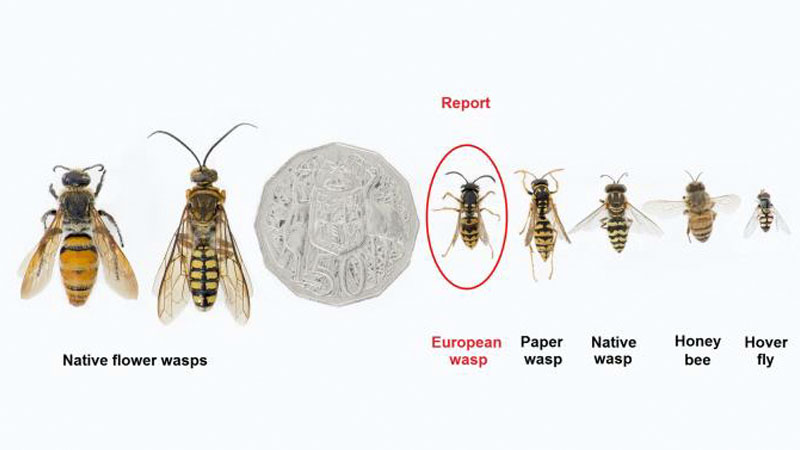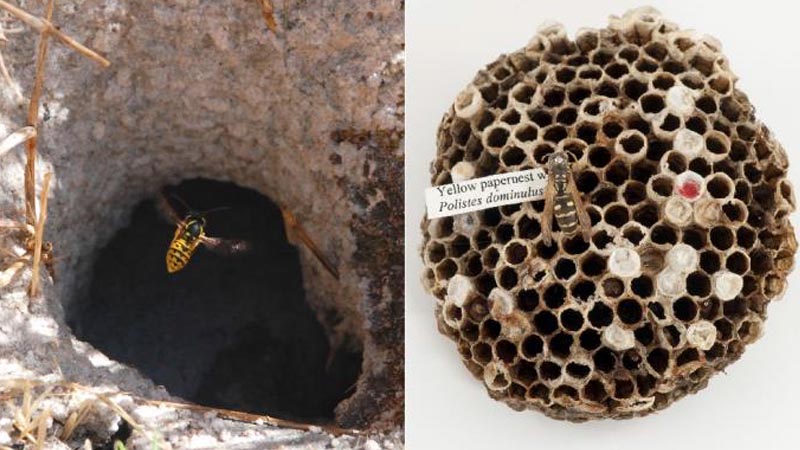Wasps belong to the Order Hymenoptera. They are a diverse group of insects: in Australia alone there are over 12,000 species, ranging from the tiny diapriid wasps, which are barely visible to the naked eye, to the spider wasps and cicada-killer wasps, capable of taking large prey.
The European wasp (Vespula germanica) is native to parts of Europe, Asia and North Africa. It is an introduced species and therefore does not have natural predators in Australia to keep numbers of these wasps low. In Europe, the cold winters ensure that only the Queen wasp can live, but the warmer climate of Australia means the entire nest can survive.
Above you can see comparison photos (right) of European Wasp entering tunnel and our native Paper Wasp. For more information follow the link below to the fact sheet.
European wasps are a pest because they are far more aggressive than native wasps. Lack of predators and warmer weather conditions mean that the European wasp is an increasing problem in Australia. This insect likes to live around humans because of the ready supply of food and drink, particularly of the sweet varieties.
The best method of wasp control is to locate the nest, or nests, in the surrounding area and eradicate them using an insecticide registered for the purpose. It is recommended that treatment of the nest occurs early in the morning or at night when wasps are less active.
When dealing with European wasps it is important to wear protective clothing and a bee veil. Be aware that a torch/ head torch without a red filter may attract wasps. You can cover a torch’s light with red cellophane secured with a rubber band. For more information on wasps visit the Victoria Government website wasp fact sheet
Ridley's Pest Control can effectively treat and eradicate your European Wasp problem.


